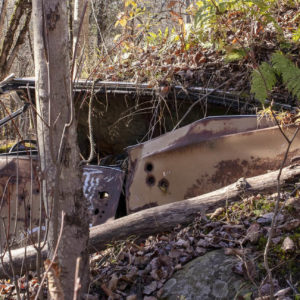The weather can take a turn for the worse without warning. Whether it’s fog, rainfall, snowfall, or something else, bad weather can obscure your field of vision and make road surfaces more slippery. Not only does a sudden weather-related change increase the chances of an accident, but it also makes a multi-car crash more likely. You aren’t the only driver on the road, and a single collision might start a chain reaction leading to a multi-car pileup.
So, how can you spot and avoid a multi-car accident before it happens? And if you cannot prevent or evade it, how can you stay safe during a pileup?
Avoiding a Multi-Car Pileup
Here are ways to reduce the risk of ending up in a multi-car pileup:
Drive More Slowly
Slow down as soon as you notice the weather taking a turn for the worse. Slower speeds give you more room and time to respond if your car or another vehicle abruptly skids or slips.
Inclement weather reduces visibility and obscures the road in front of your vehicle. Furthermore, rain, snow, and ice reduce tire traction by making the road surface more slippery. If you hit the brakes, your vehicle needs to travel farther before it slows down and stops.
Maintain Enough Following Distance and Avoid Tailgating
Keeping enough space between your vehicle and other cars and trucks on the road during bad weather goes hand-in-hand with driving at slower speeds. Furthermore, this “following distance” increases when the weather turns bad.
It’s easy to figure out the minimum following distance. When you’re on the road with another vehicle in front of yours, look ahead of the other car for an object that doesn’t move. When the other car passes that reference point, count the number of seconds until you pass it.
Try to aim for a three-second following distance in good weather. Increase it by one second for every bad weather condition present. The conditions include:
- Darkness
- Dust storms
- Fog
- Hail
- Rain
- Sandstorms
- Snow
Depending on the severity of the weather, you might have to maintain a following distance of up to 10 seconds.
Simultaneously, avoid tailgating, which is the practice of staying close to the rear of the vehicle ahead of yours. It’s the opposite of keeping enough following distance, so avoid it during bad weather.
You can learn more about the recommended following distance between cars in our article.
Give Way to Impatient Drivers
While you might refrain from tailgating, other drivers may not. Their impatience might lead to collisions and crashes because they usually can’t see past your car. If you spot things like stopped traffic ahead and hit the brakes, the driver tailgating you might rear-end your car.
Always check the rear view mirror. If the vehicle behind yours keeps tailgating you, be the bigger driver and give way to them. You can change your vehicle’s speed, move to the shoulder, or switch lanes. Give the appropriate signal to the other driver so he doesn’t get surprised.
Focus on Driving Your Vehicle
Prioritize driving your car or truck over anything else. Always keep track of where other vehicles are around you. Maintaining constant awareness lets you safely perform actions like braking or changing lanes especially when a car crash forces you to act abruptly.
If the vehicle in front of yours isn’t too tall or wide, see if you can look past it to view the road up ahead. You can plan out your actions and catch potential accidents early.
Avoid anything that takes your mind off the road unless you’re safe. Even helpful actions like looking for alternate routes around stopped traffic can distract you long enough to cause an accident.
Keep a Buffer Around Your Car
In addition to maintaining sufficient following space in front and behind of your vehicle, you must also establish a buffer zone on both sides of your car or truck. Avoid driving directly beside other vehicles during bad weather. If another driver loses control, they might swerve into you.
Look out for large trucks and tractor trailers in particular. They tend to jackknife when they skid or collide with something. In a jackknife scenario, either the trailer or the towing vehicle swings around toward the other. The swinging part can mow through anything in its path, including multiple smaller vehicles.
Be patient if there’s a big rig or a tractor trailer in front of you. Don’t try to pass the slow-moving vehicle. It’s so big that you’re probably not going to spot any crashes in time to avoid a potential jackknife.
Avoid Making Sudden Moves
Have you ever walked across a wet floor? You have to step with care if you wish to avoid the risk of slipping and falling down.
It’s the same with wet or icy roads. Just like how your bathroom slippers can’t get a good grip on slick floor tiles, tires lose traction on slippery road surfaces.
In bad weather, gradually change speed and direction. If you accelerate, decelerate, or turn abruptly, the tires might lose traction on the slippery road.
Instead of abruptly stepping on the brake pedal, consider slowing down or stopping your vehicle by releasing the accelerator and easing into the brakes. If you hit the brakes too hard while driving on slippery roads, your car might skid out of control. Meanwhile, taking your foot off the accelerator lets you slow down in a controlled fashion.
Watch the Road and Signs
Look out for road signs warning you about potential hazards during bad weather. If a sign indicates flooding, freezing, or strong winds, heed its warning. While everything might look okay, slow down and carefully drive through the hazardous area.

What Should You Do During a Car Pileup?
Sometimes, it‘s just not your day. You can do everything to avoid a car pileup, but you still end up in one.
If you get involved in a multi-car pileup, try to stay calm. There are things you can do to keep yourself safe during a multi-car crash.
Minimize the Incoming Damage
There isn’t any good crash, but you can reduce its severity with quick and wise actions. On slippery roads, apply the brakes carefully to maintain as much steering and braking control as possible. If you retain steering control, try to steer your car into a soft object that can slow you down without causing severe damage or imparting sharp jolts on you and your passengers. Finally, watch out for foot traffic around a car crash scene.
Stay in Your Car After a Crash
Speaking of people walking away from car crashes, don’t leave your car immediately. It sounds counterintuitive, but you’re usually safer inside your vehicle during a multi-car pileup.
An accident involving one or two cars can swiftly see more vehicles succumbing to the same hazard and crashing into the mess. And while the car body will get thrashed during a collision, it can still protect its occupants. If you exit your car, though, there’s a chance another vehicle or flying debris might hit you.
If you are in a multi-car crash, calm down and keep your seatbelt on. If the hazard lights still work, activate them. Wait inside until you’re sure other cars won’t crash into yours anymore.
One of the few good reasons for leaving your car immediately after a crash is if it or another vehicle is on fire. Vehicular fire is dangerous for many reasons. However, you must exit your car in the right way.
Exit Your Crashed Car Correctly
The moment you step out of your car, move to the forefront of the car crash. Then move past the crash.
Avoid moving or standing between two cars. You might get crushed if another out-of-control vehicle hits one of them.
Stay clear of shoulders, concrete barriers, or guardrails. Some drivers might drive on the shoulder to dodge the multi-car crash. Meanwhile, speeding vehicles might get shunted along barriers.
Did the multi-car pileup take place on a bridge? Move away from the traffic flow.
A multi-car pileup is dangerous and frightening. But if you drive smart, you can avoid most instances. And even if you end up in a multi-car crash, you can still protect yourself and your passengers from harm.
Any information provided on this Website is for informational purposes only and is not intended to replace consultation with a professional mechanic. The accuracy and timeliness of the information may change from the time of publication.




















